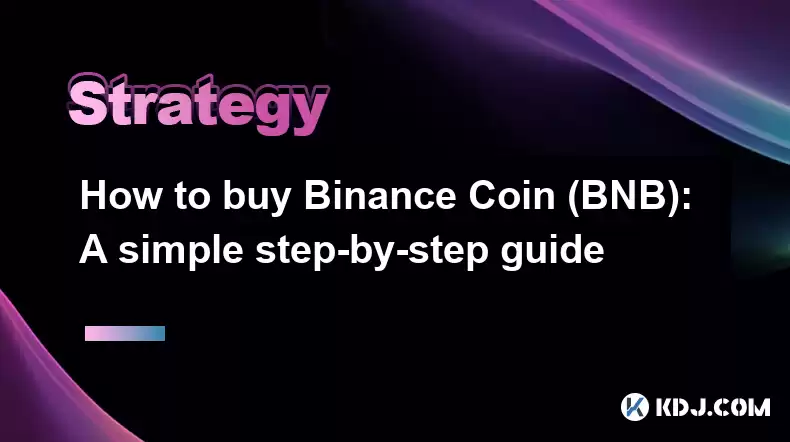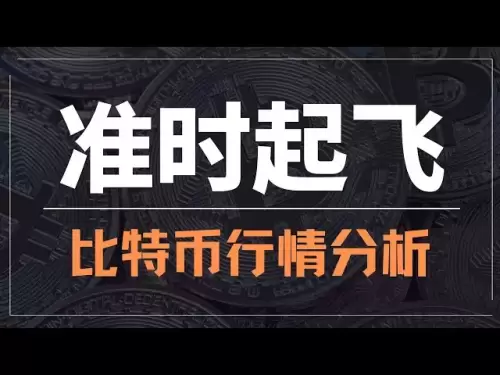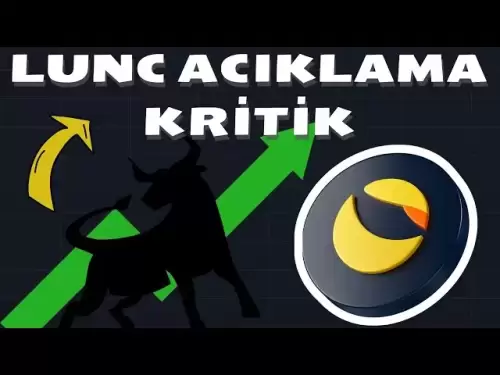-
 Bitcoin
Bitcoin $117300
1.93% -
 Ethereum
Ethereum $3866
5.21% -
 XRP
XRP $3.109
3.81% -
 Tether USDt
Tether USDt $1.000
0.01% -
 BNB
BNB $781.5
1.52% -
 Solana
Solana $173.0
2.95% -
 USDC
USDC $0.9998
0.00% -
 Dogecoin
Dogecoin $0.2181
6.31% -
 TRON
TRON $0.3403
0.93% -
 Cardano
Cardano $0.7683
3.91% -
 Hyperliquid
Hyperliquid $40.08
5.09% -
 Sui
Sui $3.742
7.38% -
 Stellar
Stellar $0.4152
4.69% -
 Chainlink
Chainlink $18.40
10.03% -
 Bitcoin Cash
Bitcoin Cash $580.6
2.21% -
 Hedera
Hedera $0.2543
4.25% -
 Ethena USDe
Ethena USDe $1.001
-0.01% -
 Avalanche
Avalanche $22.94
3.52% -
 Litecoin
Litecoin $121.8
2.24% -
 UNUS SED LEO
UNUS SED LEO $8.955
-0.41% -
 Toncoin
Toncoin $3.330
3.03% -
 Shiba Inu
Shiba Inu $0.00001270
2.97% -
 Uniswap
Uniswap $10.34
6.42% -
 Polkadot
Polkadot $3.805
3.86% -
 Dai
Dai $1.000
0.01% -
 Bitget Token
Bitget Token $4.429
1.80% -
 Cronos
Cronos $0.1495
4.65% -
 Monero
Monero $255.6
-9.08% -
 Pepe
Pepe $0.00001096
4.40% -
 Aave
Aave $282.9
7.85%
How to buy Binance Coin (BNB): A simple step-by-step guide
To buy BNB on Binance, register an account, deposit funds, navigate to 'Trade', select BNB, place an order, and confirm the transaction.
Apr 11, 2025 at 01:15 am

How to buy Binance Coin (BNB): A simple step-by-step guide
Binance Coin (BNB) is the native cryptocurrency of the Binance exchange, one of the largest and most popular crypto trading platforms in the world. BNB has multiple use cases, including paying for trading fees on the Binance platform, participating in token sales on the Binance Launchpad, and more. If you're interested in acquiring BNB, this guide will walk you through the process step-by-step.
Setting Up a Binance Account
Before you can buy BNB, you need to set up an account on the Binance exchange. Here's how to do it:
- Visit the Binance website: Open your web browser and go to www.binance.com.
- Click on 'Register': You'll find this option at the top right corner of the homepage.
- Enter your email and create a password: Make sure to use a strong password and an email address you have access to.
- Complete the verification process: Binance requires you to verify your email address and complete a KYC (Know Your Customer) process. Follow the prompts to upload the necessary documents and wait for approval.
- Enable Two-Factor Authentication (2FA): For added security, go to the 'Security' tab in your account settings and enable 2FA using an authenticator app like Google Authenticator.
Depositing Funds into Your Binance Account
Once your account is set up and verified, you need to deposit funds to buy BNB. Here's how to do it:
- Navigate to the 'Wallet' section: Click on 'Wallet' in the top navigation bar, then select 'Overview'.
- Choose 'Deposit': Click on the 'Deposit' button.
- Select your preferred cryptocurrency: Choose the cryptocurrency you want to deposit, such as Bitcoin (BTC), Ethereum (ETH), or a stablecoin like USDT.
- Generate a deposit address: Follow the instructions to generate a unique deposit address for the selected cryptocurrency.
- Send funds to the deposit address: Use your external wallet or another exchange to send the chosen cryptocurrency to the generated deposit address. Wait for the transaction to be confirmed on the blockchain.
Buying BNB on Binance
With funds in your Binance account, you can now buy BNB. Here's how to do it:
- Go to the 'Trade' section: Click on 'Trade' in the top navigation bar, then select 'Classic'.
- Search for BNB: In the search bar, type 'BNB' and select the BNB trading pair you want to use (e.g., BNB/BTC, BNB/USDT).
- Place an order: Decide whether you want to place a market order or a limit order. For a market order, enter the amount of BNB you want to buy and click 'Buy BNB'. For a limit order, enter the amount of BNB and the price at which you want to buy it, then click 'Buy BNB'.
- Confirm the transaction: Review the details of your order and confirm it. The BNB will be credited to your Binance wallet once the order is executed.
Withdrawing BNB to an External Wallet
If you want to move your BNB to an external wallet for added security or other purposes, follow these steps:
- Go to the 'Wallet' section: Click on 'Wallet' in the top navigation bar, then select 'Overview'.
- Choose 'Withdraw': Click on the 'Withdraw' button.
- Select BNB: Choose BNB from the list of available cryptocurrencies.
- Enter the withdrawal address: Enter the address of the external wallet where you want to send your BNB. Double-check the address to avoid errors.
- Specify the amount: Enter the amount of BNB you want to withdraw.
- Confirm the withdrawal: Review the details and confirm the withdrawal. You may need to complete an additional security verification step, such as entering a 2FA code.
- Wait for the transaction to be processed: The withdrawal will be processed by Binance, and the BNB will be sent to the specified address once the transaction is confirmed on the blockchain.
Using BNB on the Binance Platform
Once you have BNB in your Binance account, you can use it for various purposes:
- Paying for trading fees: You can use BNB to pay for trading fees on the Binance platform, which can result in a discount compared to using other cryptocurrencies.
- Participating in token sales: BNB is required to participate in token sales on the Binance Launchpad, where new projects are launched and tokens are distributed to participants.
- Staking and earning rewards: You can stake your BNB in various programs offered by Binance to earn additional rewards.
Frequently Asked Questions
Q: Can I buy BNB with fiat currency directly on Binance?
A: Yes, Binance supports direct purchases of BNB with fiat currency in certain regions. You can use options like credit/debit cards, bank transfers, or third-party payment services to buy BNB directly.
Q: What are the fees associated with buying BNB on Binance?
A: The fees for buying BNB on Binance depend on the trading pair and the type of order you place. For spot trading, the maker fee is 0.1% and the taker fee is 0.1%. However, using BNB to pay for fees can result in a 25% discount.
Q: Is it safe to store BNB on the Binance platform?
A: Binance has robust security measures in place, including cold storage for the majority of user funds and two-factor authentication. However, for added security, many users choose to withdraw their BNB to external wallets where they have full control over their private keys.
Q: Can I use BNB on other platforms besides Binance?
A: Yes, BNB is used on various decentralized applications (dApps) and platforms within the Binance Smart Chain ecosystem. It can be used for transactions, staking, and other purposes on these platforms.
Disclaimer:info@kdj.com
The information provided is not trading advice. kdj.com does not assume any responsibility for any investments made based on the information provided in this article. Cryptocurrencies are highly volatile and it is highly recommended that you invest with caution after thorough research!
If you believe that the content used on this website infringes your copyright, please contact us immediately (info@kdj.com) and we will delete it promptly.
- Bitcoin Reserve, Gold Revaluation, Congress Considers: A New Era for US Financial Strategy?
- 2025-08-08 04:30:12
- KAITO's Momentum: Can It Reclaim Support Amidst Social Media Scrutiny?
- 2025-08-08 04:30:12
- Pi Coin's dApp and AI Potential: Building a Decentralized Future
- 2025-08-08 02:30:12
- Ruvi AI Takes the Lead: Outshining Dogecoin on CoinMarketCap
- 2025-08-08 02:50:12
- Cryptos Under $1: Is Ripple Still the King?
- 2025-08-08 03:50:12
- Cold Wallet, Bonk Price, ICP Price: Navigating the Crypto Landscape in 2025
- 2025-08-08 03:56:12
Related knowledge

How to avoid common crypto investment mistakes?
Jul 13,2025 at 01:35am
Understanding the Risks of Crypto InvestmentInvesting in cryptocurrency can be highly rewarding, but it also comes with significant risks. One of the ...

What is a long-short crypto strategy?
Jul 15,2025 at 10:56am
Understanding the Basics of a Long-Short Crypto StrategyA long-short crypto strategy is an investment approach where traders simultaneously take long ...

What is a long-short crypto strategy?
Jul 11,2025 at 01:28pm
Understanding the Basics of Long-Short Crypto StrategyA long-short crypto strategy is an investment approach where traders take both long and short po...

How to use the RSI indicator for crypto?
Jul 12,2025 at 03:56pm
Understanding the RSI Indicator in Cryptocurrency TradingThe Relative Strength Index (RSI) is a momentum oscillator used to measure the speed and chan...

Is copy trading a good strategy for crypto beginners?
Jul 12,2025 at 08:28am
Understanding Copy Trading in the Cryptocurrency MarketCopy trading is a strategy where novice traders replicate the trades of experienced investors a...

How to build a crypto portfolio with $1000?
Jul 13,2025 at 08:14pm
Understanding the Basics of Cryptocurrency InvestmentBuilding a crypto portfolio with $1000 starts with understanding the fundamentals of cryptocurren...

How to avoid common crypto investment mistakes?
Jul 13,2025 at 01:35am
Understanding the Risks of Crypto InvestmentInvesting in cryptocurrency can be highly rewarding, but it also comes with significant risks. One of the ...

What is a long-short crypto strategy?
Jul 15,2025 at 10:56am
Understanding the Basics of a Long-Short Crypto StrategyA long-short crypto strategy is an investment approach where traders simultaneously take long ...

What is a long-short crypto strategy?
Jul 11,2025 at 01:28pm
Understanding the Basics of Long-Short Crypto StrategyA long-short crypto strategy is an investment approach where traders take both long and short po...

How to use the RSI indicator for crypto?
Jul 12,2025 at 03:56pm
Understanding the RSI Indicator in Cryptocurrency TradingThe Relative Strength Index (RSI) is a momentum oscillator used to measure the speed and chan...

Is copy trading a good strategy for crypto beginners?
Jul 12,2025 at 08:28am
Understanding Copy Trading in the Cryptocurrency MarketCopy trading is a strategy where novice traders replicate the trades of experienced investors a...

How to build a crypto portfolio with $1000?
Jul 13,2025 at 08:14pm
Understanding the Basics of Cryptocurrency InvestmentBuilding a crypto portfolio with $1000 starts with understanding the fundamentals of cryptocurren...
See all articles

























































































